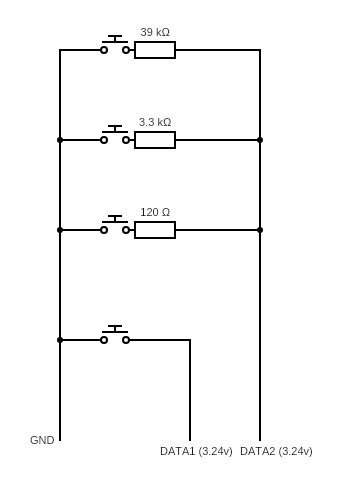I would like to control my PC monitor. After disassembly I found the control buttons are implemented like this (just more data line and buttons)
I would like to control it (with ESP2866) With the first button which is alone in a DATA line 1 there is no problem I just simply pull down with one of the GPIO like this and it is working flawlessly (I don't use any resistor because expecting in the other side there is)
With Data line 2 I’m having trouble with the same approach the button with the smallest resistor is triggered from other button. I try to use resistor, transistor but it just got worse.
Please note ESP is working a bit higher voltage than 3.24v it is 3.26v Also connected the ground wires
I wonder how should I try to interface with this?
Thank you


